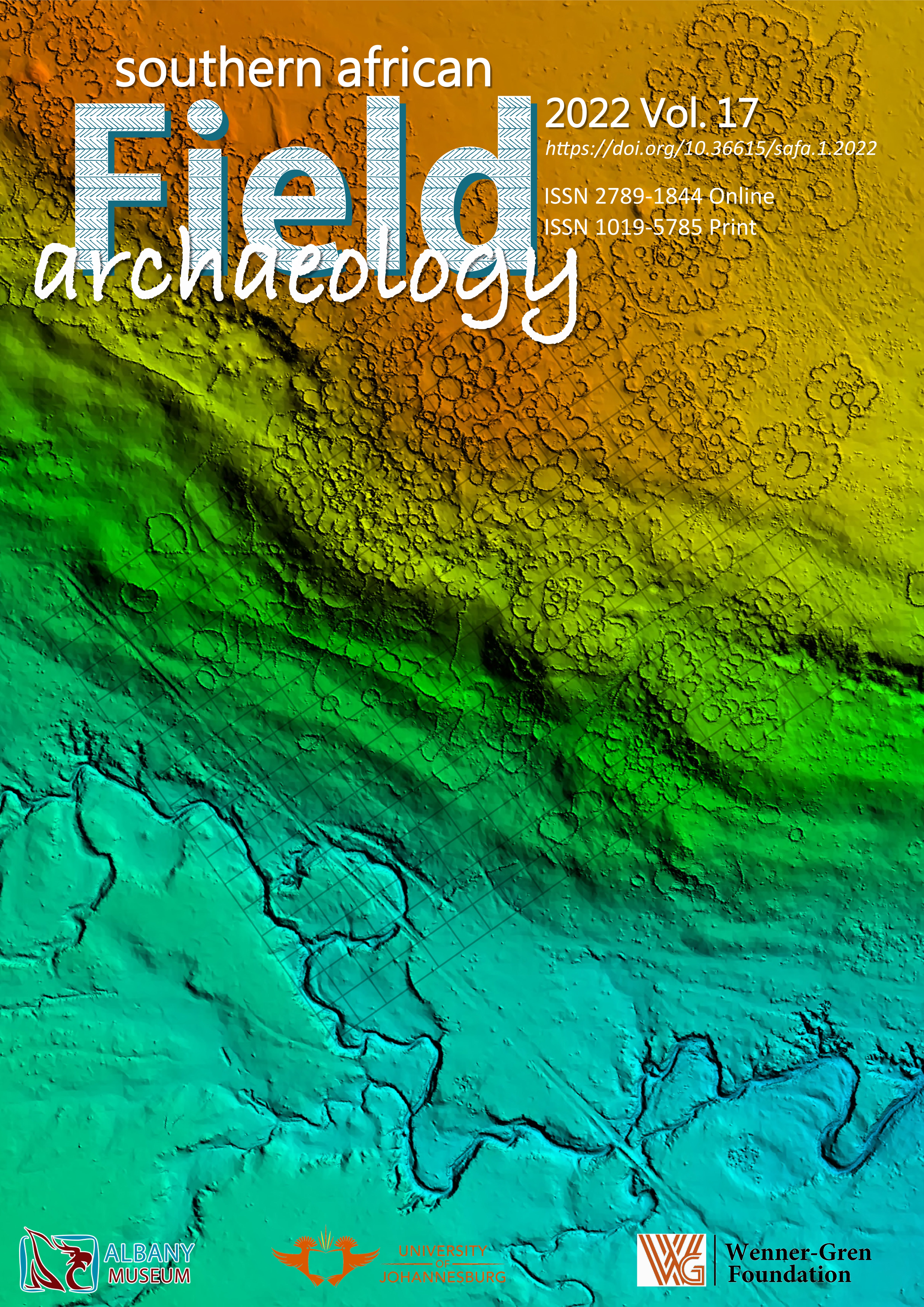A bioarchaeological analysis of skeletal remains from Van Zyl’s farm, Clarens, Free State, South Africa
Main Article Content
Keywords
bioarchaeology, Late Iron Age, farming communities, skeletal analysis, collections-based research
Abstract
In 1933, several skeletons were recovered from Van Zyl’s farm near Clarens in the Free State Province of South Africa. Apart from the general location from which these remains were recovered, very little was known about these individuals’ temporal and cultural contexts. This study aimed to analyse and describe these skeletons and any possible associated historical and archaeological records to reconstruct aspects of their archaeological context and lifestyle. Most of the remains were commingled, and from these, a minimum number of individuals (MNI) of 11 was established. There was one complete and intact individual, which raised the sample size to 12 individuals. The assemblage comprised three juveniles (<5 years) and nine adults (between the ages of 20 and 45, and 50+ years), of which six were estimated to be males and three females. The complete individual, an older adult male, was radiocarbon dated to 844±35 BP (Ua-61831). Several individuals had osteoarthritis and signs of non-specific and dental disease. One of the younger adult female individuals had culturally modified upper central incisors. Stable δ13C and δ15N values indicated a predominantly C4 terrestrial plant-based diet, with little reliance on animal-derived protein. The only complete male individual was of interest due to his unique biological characteristics, being very tall and morphologically robust and clearly not of Khoe-San ancestry. The date obtained for the complete individual is unusual as it is generally thought that Bantu-speaking farmers only reached the interior Drakensberg and Maluti regions much later.


